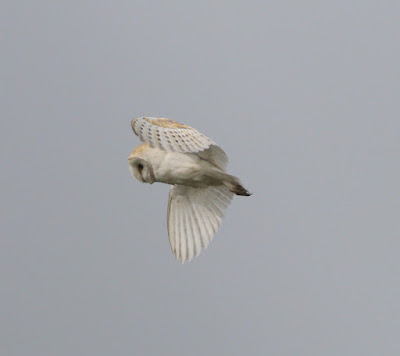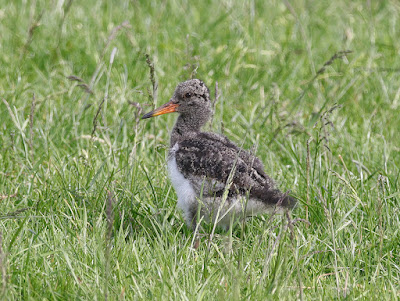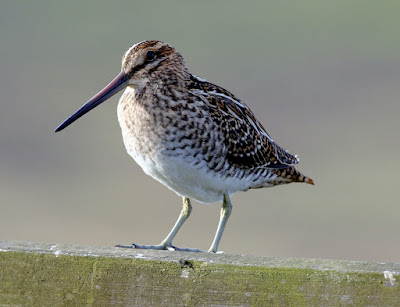I’m trying to pack some early starts in these now longest days even though the birding is a little unexciting and predictable until July kicks in. There was a fine start this morning but cloud increased quite quickly and I found myself back home in time for morning coffee and a Rich Tea.
Early Start - Cockerham
Without the morning traffic it’s surprising just what can be heard across the quiet moss roads. I located both Yellowhammer and Corn Bunting by their respective far-carrying songs but each was a good 60+ yards away. Further along the same route I found a second Corn Bunting, two more Yellowhammers and a party of six Mistle Thrushes. Six is a good number together at this time of year and the likelihood is that they were one family group from one very crowded nest.
Corn Bunting
I stopped in a farm gateway to check out a Buzzard nest 75 yards away in a line of trees. When found in early May the nest was a lot more obvious but it is now difficult to see, especially on a breezy morning.
Today both adults were in attendance but at the sight of a stopped vehicle they made themselves scarce in double quick time. Such is the Buzzards’ local status and ongoing harassment that a nesting pair still fears for their own safety. The single downy headed youngster appeared on the edge of the nest, took a few practice flaps and then settled down into the now somewhat flattened sticks. There would appear to be a week or more to fledging.
Young Buzzard
The retreating adults had been chased off by a local Kestrel from a farm down a nearby track. Where the Sparrowhawk pair is I do not know but as I waited for the Buzzard chick to show again, I made do with a single Sparrowhawk heading across the fields.
Along the next road I came across two Pilling celebrities, Bill and Bunty, the pair of day-flying owls. These two continue to surprise and delight passing farmers, cyclists, motorists and white van men to such an extent that a vehicle pile-up may be imminent as road users swerve, stop, stare and shout to each other at the sight of these common but often invisible creatures.
The pair are well known and treasured by locals so it’s all to the good if the owls’ presence diverts people from disturbing other Barn Owls that may be susceptible to interference. The Barn owl is after all, a Schedule One species and should be immune from any type of illegal meddling. The two were a soccer pitch away today so no chance of a world beating photo; and anyway I was on my way to Conder Green for early doors.
Barn Owls
At Gulf Lane I caught sight of Tawny Owl as it flew for a safer spot but pursued by angry Blackbirds and chippy Tree Sparrows.
The usual fare was at Conder – 6 Common Tern, possibly one of which was later fishing the canal basin at Glasson Dock. As noted recently, an increase in Redshanks to more than 150 today; 32 Oystercatchers (including non-flying young), 15 Lapwing, 2 Common Sandpiper, 2 Curlew, 1 Avocet, 1 Grey Heron, 1 Little Egret. The Avocet was flighty today as it flew over to the creek where it both fed and bathed. I gained the impression it may now be without a partner.
Oystercatcher
Oystercatcher
Smaller stuff around and about – 20 Swift, 5 Sand Martin, 5 Sedge Warbler, 4 Whitethroat, 4 Reed Bunting, 1 Reed Warbler.
Reed Bunting
Log on soon for more early doors with Another Bird Blog.
Linking this post to World Bird Wednesday and Anni's Birding Blog.
Linking this post to World Bird Wednesday and Anni's Birding Blog.




























































.JPG)







.jpg)












